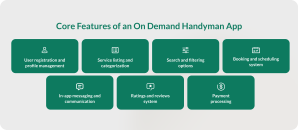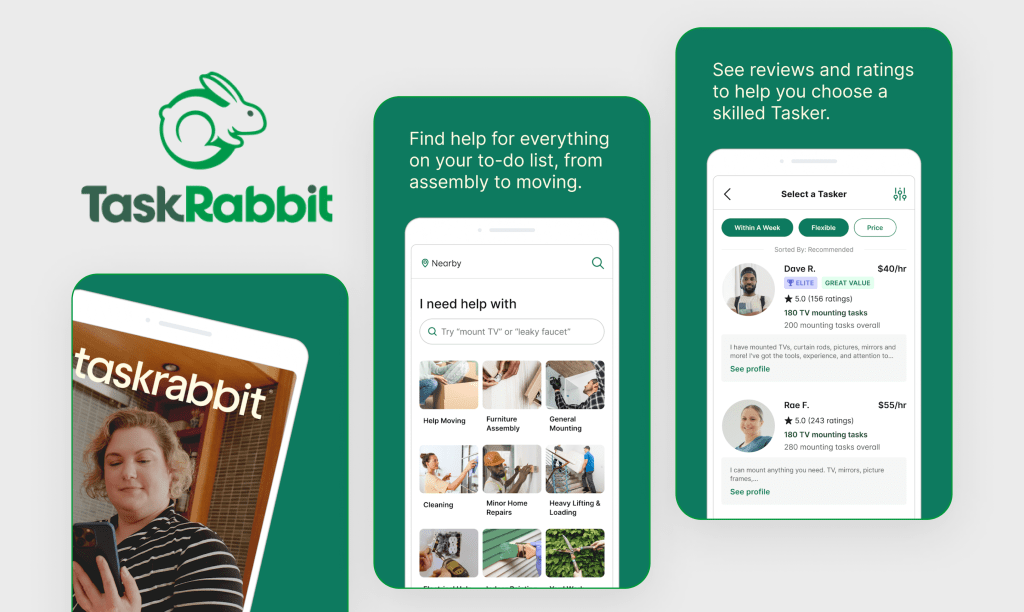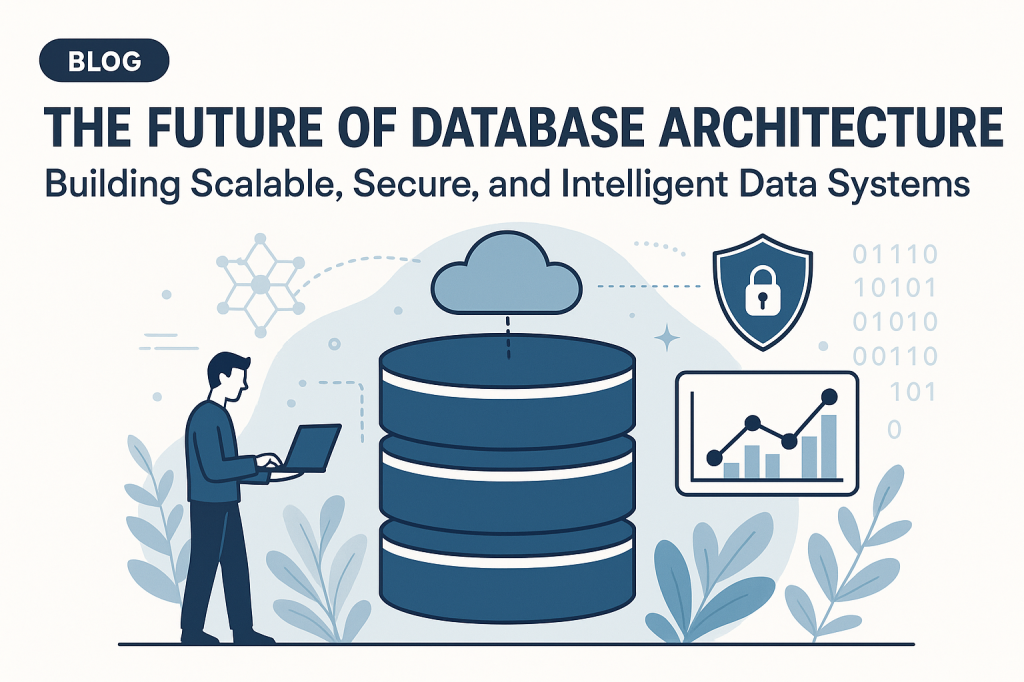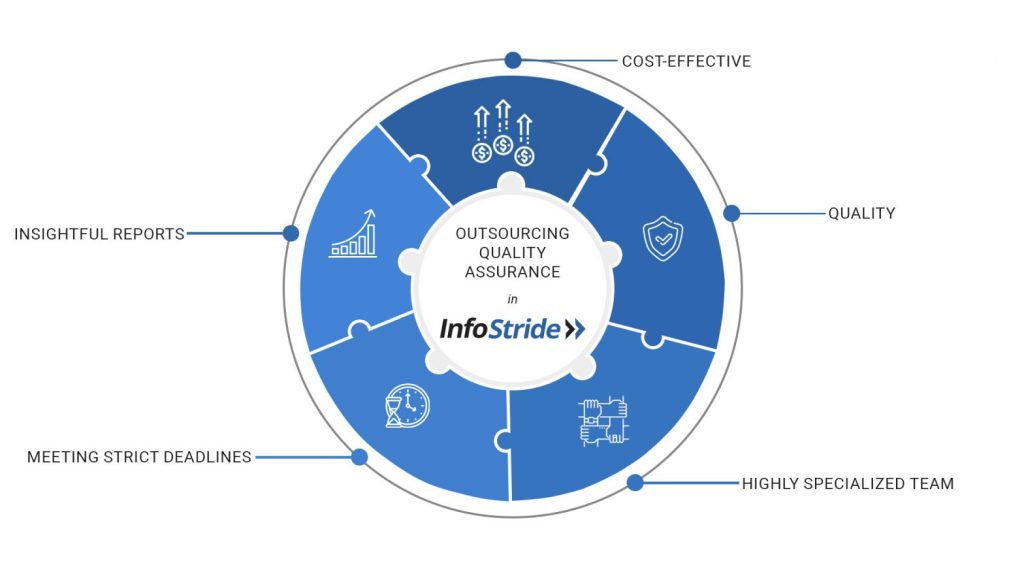Table of Content
Market Research and Analysis To Build an On Demand Handyman App Like TaskRabbit
Planning and Conceptualization To Build Your On Demand Handyman App
Technology Stack Used To Build an On Demand Handyman App Like TaskRabbit
Designing User Experience For an On Demand Handyman App Like TaskRabbit
Development Process To Build an On Demand Handyman App Like TaskRabbit
Launch Strategy For an On Demand Handyman App Marketplace
Challenges in Operating On Demand Handyman App Like TaskRabbit(With Solutions)
In today’s fast-paced world, the on-demand economy has transformed the way we access goods and services, offering convenience at the tap of a button. According to PWC, the global revenue of the on-demand economy is projected to reach $335 billion by 2025, highlighting its immense growth and impact. Within this ecosystem, on-demand handyman services stand out as an essential component, catering to the immediate needs of homeowners and businesses alike.
The importance of on-demand handyman services cannot be overstated, especially in a society where time is of the essence. Whether it’s fixing a leaky faucet, assembling furniture, or tackling home repairs, consumers increasingly turn to on-demand platforms to connect with skilled professionals swiftly and efficiently. TaskRabbit, one of the pioneers in this space, has revolutionized the way people find help for their everyday tasks, offering a seamless platform where users can hire vetted and reliable handyman for a variety of jobs.
Through this blog, we embark on a journey to dissect the intricacies of building a robust app marketplace like TaskRabbit, unraveling the essential steps, challenges, and innovations required to thrive in this dynamic ecosystem. So, buckle up as we delve into the world of on-demand handyman services and unveil the blueprint for building an app like TaskRabbit while paving the way for its unique identity in the digital realm.
Market Research and Analysis To Build an On Demand Handyman App Like TaskRabbit

Before embarking on the development of an on-demand handyman app marketplace like TaskRabbit, thorough market research and analysis are essential to lay a solid foundation for success.
Market research involves gathering and analyzing data about the industry, target audience, and competitors to make informed decisions and shape the direction of the app development process.
- Industry Overview: Start by understanding the broader landscape of the on-demand economy and how handyman services fit into it. Explore trends, growth projections, and key players in the market to gain insights into the industry’s dynamics and opportunities.
- Target Audience Analysis: Dive deep into the demographics, preferences, and pain points of the target audience, including busy professionals, homeowners, landlords, and small businesses seeking maintenance solutions. Conduct surveys, interviews, and market studies to gather actionable insights that will inform the app’s features and user experience.
- Competitor Analysis: Study existing platforms like TaskRabbit, Thumbtack, and Handy to understand their strengths, weaknesses, and market strategies. Analyze their offerings, pricing models, user reviews, and market penetration to identify areas for differentiation and competitive advantage.
- Niche Identification: Explore niche opportunities within the market, such as targeting specific geographic areas, offering specialized services, or catering to underserved customer segments. By identifying and capitalizing on niche markets, you can carve out a unique position in the competitive landscape and appeal to specific customer needs.
Planning and Conceptualization To Build Your On Demand Handyman App

A. Defining the Scope and Features of the App:
Before diving into development, it’s essential to define the scope and features of your on-demand handyman app like TaskRabbit. Start by outlining the core functionalities required to meet the needs of your target audience and differentiate your app from competitors. Key features of an app like TaskRabbit include:
- User registration and profile management: Allow users to create accounts, manage their profiles, and track their service history.
- Service listing and categorization: Enable handymen to list their services, specify their expertise, and categorize offerings for easy navigation.
- Search and filtering options: Implement robust search and filtering capabilities to help users find relevant services based on location, availability, and specific requirements.
- Booking and scheduling system: Facilitate seamless booking and scheduling of appointments, allowing users to select preferred time slots and communicate with service providers.
- In-app messaging and communication: Enable real-time communication between users and handymen through in-app messaging, facilitating quick updates, clarifications, and coordination.
- Ratings and reviews system: Implement a rating and review system to build trust and transparency, allowing users to provide feedback on service quality and reliability.
- Payment processing: Integrate secure payment gateways to facilitate seamless and hassle-free transactions, supporting various payment methods and currencies.
B. Creating User Personas:

Developing detailed user personas is crucial for understanding the needs, preferences, and behaviors of your target audience. Each persona should represent a distinct segment of users and help inform design decisions and feature prioritization. For example:
- Busy Professional Brian: A busy executive who values convenience and reliability, Brian seeks quick and efficient solutions for his home maintenance needs. He prioritizes services that offer flexible scheduling and high-quality workmanship.
- Homeowner Helen: A homeowner and DIY enthusiast, Helen enjoys tackling minor home repairs but relies on professional help for complex projects. She values transparency and communication, preferring service providers who offer detailed cost estimates and timely updates.
- Landlord Larry: A property manager overseeing multiple rental units, Larry requires reliable handyman services to address maintenance issues promptly and minimize disruptions for tenants. He prioritizes efficiency and cost-effectiveness, seeking providers who offer competitive rates and reliable service.
- Small Business Owner Olivia: A small business owner operating a boutique shop, Olivia depends on dependable handyman services to maintain her storefront and create a welcoming environment for customers. She values professionalism and responsiveness, preferring service providers who prioritize customer satisfaction and timely communication.
C. Wireframing and Prototyping the App:
Once the scope and features are defined and user personas are created, it’s time to visualize the app’s interface and user experience through wireframing and prototyping. Start by sketching out rough layouts and navigation flows, focusing on usability and simplicity. Use wireframing tools or prototyping software to create interactive prototypes that simulate the app’s functionality and user interactions.
Solicit feedback from stakeholders, usability testing, and iterate on the designs to refine and improve the user experience before moving into full-scale development. By wireframing and prototyping the app early in the planning process, you can identify potential usability issues and design flaws, saving time and resources in the long run.
Recommended Read – How to Create an Online Marketplace – A Complete Guide
Technology Stack Used To Build an On Demand Handyman App Like TaskRabbit
A. Choosing the Right Platform (iOS, Android, Web):
Selecting the appropriate platform for your on-demand handyman app like TaskRabbit depends on factors such as target audience demographics, market trends, and budget constraints. Consider the following:
- Native mobile app development: Building separate iOS and Android apps offers the best performance and user experience but requires more time and resources.
- Cross-platform development: Utilizing frameworks like React Native or Flutter allows for simultaneous development of iOS and Android apps using a single codebase, reducing development time and costs.
- Web app development: Creating a responsive web app provides broader accessibility across devices and platforms, complementing native mobile apps or serving as a standalone solution for users who prefer browser-based access.
B. Backend Development Technologies:
The backend of your on-demand handyman app like TaskRabbit is responsible for managing data, user authentication, and business logic. Choose backend technologies that offer scalability, security, and flexibility. Popular options include:
- Server-side programming languages: Use languages like Node.js, Python, or Ruby on Rails for backend development, considering factors like performance, community support, and developer familiarity.
- Database management systems: Select databases such as PostgreSQL, MongoDB, or MySQL to store and retrieve data efficiently, considering requirements for scalability, data consistency, and relational vs. non-relational data models.
- Cloud infrastructure: Leverage cloud platforms like AWS, Google Cloud Platform, or Microsoft Azure for scalable hosting, storage, and computing resources, ensuring reliability, scalability, and cost-effectiveness.
C. Third-Party Integrations (Payment Gateways, Maps, Messaging):
Integrating third-party services and APIs into your on-demand handyman app enhances functionality and improves the user experience. Consider the following integrations:
- Payment gateways: Integrate secure payment gateways like Stripe, PayPal, or Braintree to facilitate seamless and secure transactions, supporting various payment methods and currencies.
- Mapping and geolocation services: Incorporate mapping APIs like Google Maps or Mapbox to provide users with accurate location-based services, including service provider search, route optimization, and real-time tracking.
- Messaging and communication tools: Integrate messaging APIs such as Twilio or Firebase Cloud Messaging to enable real-time communication between users and service providers, facilitating appointment scheduling, updates, and notifications.
- Social media integration: Allow users to sign in or share their experiences via social media platforms like Facebook or Twitter, enhancing user engagement and virality.
By carefully selecting the technology stack and integrating third-party services strategically, you can build a robust and feature-rich on-demand handyman app like TaskRabbit that meets the needs of users and exceeds their expectations.
Designing User Experience For an On Demand Handyman App Like TaskRabbit
A. Creating Intuitive UI/UX Design:
The user interface (UI) and user experience (UX) design play a crucial role in the success of your on-demand handyman app, influencing user engagement, retention, and satisfaction. Focus on creating a visually appealing and intuitive design that guides users seamlessly through the app’s features and functionalities. Consider the following principles:
- Consistency: Maintain a consistent design language, including colors, typography, and iconography, to create a cohesive and recognizable user experience.
- Simplicity: Keep the interface clean and clutter-free, prioritizing essential elements and minimizing distractions to enhance usability and comprehension.
- Clear hierarchy: Organize content and navigation elements in a logical hierarchy, making it easy for users to find what they need and take desired actions.
- Visual feedback: Provide visual cues and feedback, such as animations, transitions, and micro-interactions, to indicate user interactions and system responses, enhancing responsiveness and engagement.
- Accessibility: Ensure that the UI design is accessible to users with disabilities, including considerations for color contrast, font size, and screen reader compatibility.
B. Implementing User-Friendly Navigation:
Efficient navigation is essential for users to explore the app, find relevant information, and complete tasks quickly and effortlessly. Design navigation systems that are intuitive and easy to use, considering the following best practices:
- Clear navigation paths: Structure navigation menus and pathways logically, using familiar patterns such as tabs, menus, and breadcrumbs to help users navigate between sections and pages.
- Minimal clicks: Minimize the number of clicks required to access key features and information, prioritizing simplicity and efficiency in navigation flows.
- Search functionality: Implement robust search capabilities, allowing users to find specific services, providers, or content quickly, especially for users with specific needs or preferences.
- Contextual navigation: Provide contextual navigation options based on user actions and preferences, guiding users to relevant content or actions within the app’s context.
- Responsive navigation: Ensure that navigation elements adapt seamlessly to different screen sizes and orientations, maintaining usability and functionality across devices and platforms.
C. Ensuring Accessibility and Responsiveness:
Accessibility and responsiveness are fundamental aspects of user experience design, ensuring that the app is usable and functional for all users, regardless of their device or abilities. Consider the following strategies:
- Responsive design: Design UI layouts and components to adapt dynamically to various screen sizes and resolutions, providing a consistent and optimized experience across devices.
- Accessibility features: Implement accessibility features such as alternative text for images, keyboard navigation, and screen reader compatibility to accommodate users with disabilities and improve usability for all users.
- Performance optimization: Optimize app performance and loading times to ensure smooth and responsive interactions, minimizing delays and frustrations for users.
- Cross-platform compatibility: Test the app thoroughly on different devices, browsers, and operating systems to identify and address compatibility issues, ensuring a seamless experience for users across platforms.
Development Process To Build an On Demand Handyman App Like TaskRabbit
A. Agile Development Methodology:
Adopting an agile development methodology is crucial for the successful and efficient creation of your on-demand handyman app like TaskRabbit. Agile methodologies, such as Scrum or Kanban, emphasize flexibility, collaboration, and iterative development.
B. Setting Up Development Environments:
Creating a robust development environment is essential for facilitating collaboration, streamlining workflows, and ensuring the stability and security of your on-demand handyman app. Consider the following steps:
- Version control: Implement a version control system, such as Git, to track changes, manage codebase collaboration, and facilitate code review and integration.
- Development tools: Provide developers with access to essential development tools, including integrated development environments (IDEs), code editors, and debugging tools, to support efficient coding and debugging processes.
- DevOps practices: Embrace DevOps practices to automate and streamline the deployment and operations of your app, including continuous integration (CI) and continuous delivery (CD) pipelines, infrastructure as code (IaC), and monitoring and logging solutions.
- Security measures: Implement security best practices, such as secure coding standards, vulnerability scanning, and access controls, to protect sensitive data and mitigate security risks throughout the development lifecycle.
C. Iterative Development and Testing:
Adopting an iterative development and testing approach allows for incremental improvements and quality assurance throughout the development process. Key practices include:
- User story refinement: Collaborate with stakeholders to refine user stories and acceptance criteria, ensuring a shared understanding of requirements and priorities before development begins.
- Sprint planning: Plan and prioritize development tasks for each sprint based on user feedback, project goals, and resource availability, ensuring a balance between delivering value and managing technical debt.
- Continuous testing: Integrate automated testing processes, including unit tests, integration tests, and end-to-end tests, into the development workflow to identify bugs and regressions early and ensure code quality and reliability.
- User acceptance testing (UAT): Involve stakeholders and end users in UAT activities to validate features, gather feedback, and verify that the app meets user expectations and business requirements.
- Incremental deployment: Deploy new features and updates incrementally, leveraging feature toggles or gradual rollouts to mitigate risks and minimize disruption to users.
Launch Strategy For an On Demand Handyman App Marketplace
A. Pre-launch Marketing and Promotions:

Before the official launch of your on-demand handyman app, it’s essential to generate buzz and anticipation among your target audience. Pre-launch marketing and promotions can help create awareness and excitement about your app. Strategies to consider include:
- Teaser campaigns: Release teaser content on social media platforms and your website to give potential users a sneak peek into the app’s features and benefits.
- Email marketing: Build an email list of interested users and send out newsletters and updates about the upcoming launch, including exclusive offers or early access opportunities.
- Influencer partnerships: Collaborate with influencers or industry experts in the home maintenance space to endorse your app and reach a wider audience.
- Beta testing: Invite a select group of users to participate in beta testing to gather feedback, identify bugs, and refine the app before the official launch.
B. App Store Optimization (ASO):
Optimizing your app store presence is crucial for maximizing visibility and downloads on app stores. App Store Optimization (ASO) involves optimizing various elements of your app store listing to improve discoverability and conversion rates. Key tactics include:
- Keyword research: Identify relevant keywords and phrases that potential users might use to search for handyman services and incorporate them into your app title, description, and metadata.
- Compelling visuals: Use high-quality app icons, screenshots, and promotional graphics to showcase your app’s features and attract users’ attention.
- Engaging descriptions: Craft compelling and informative descriptions that highlight the unique selling points of your app and persuade users to download.
- Ratings and reviews: Encourage satisfied users to leave positive ratings and reviews on the app store, as higher ratings and positive reviews can improve your app’s visibility and credibility.
C. User Acquisition Tactics:
Acquiring users is a critical aspect of launching a successful on-demand handyman app like TaskRabbit. Implementing effective user acquisition tactics can help drive initial downloads and engagement. Strategies to consider include:
- Social media advertising: Run targeted advertising campaigns on platforms like Facebook, Instagram, and Twitter to reach users who may be interested in your app.
- Content marketing: Create valuable and relevant content, such as blog posts, videos, and tutorials, to establish your app as a trusted resource in the home maintenance space and attract organic traffic.
- Referral programs: Incentivize existing users to refer their friends and family to download and use your app by offering rewards or discounts for successful referrals.
- Local partnerships: Forge partnerships with local businesses, home service providers, or community organizations to promote your app to their customer base and gain exposure in specific geographic areas.
Challenges in Operating On Demand Handyman App Like TaskRabbit(With Solutions)
A. Overcoming Regulatory Hurdles:
Launching an on-demand handyman app like TaskRabbit often involves navigating regulatory challenges and compliance requirements in various jurisdictions. Some common regulatory hurdles include licensing, insurance, and labor laws. To overcome these challenges, consider the following solutions:
- Research regulations: Conduct thorough research into local, state, and national regulations governing home services and on-demand platforms in your target markets.
- Consult legal experts: Seek guidance from legal professionals experienced in regulatory compliance to ensure that your app adheres to all relevant laws and regulations.
- Establish partnerships: Partner with licensed and insured service providers who can operate legally within your target markets, mitigating regulatory risks and ensuring compliance.
- Advocate for change: Engage with policymakers, industry associations, and advocacy groups to advocate for regulatory reforms that support innovation and entrepreneurship in the on-demand economy.
B. Managing Supply and Demand Dynamics:

Balancing supply and demand is a common challenge for on-demand platforms, as fluctuations in user demand and service provider availability can impact service quality and customer satisfaction. To address this challenge, consider the following solutions:
- Data-driven analytics: Implement data analytics tools to monitor supply and demand trends, analyze user behavior, and forecast service needs, enabling proactive decision-making and resource allocation.
- Dynamic pricing: Implement dynamic pricing algorithms that adjust service prices based on demand, availability, and other factors, incentivizing service providers to meet demand during peak periods and optimizing revenue.
- Incentive programs: Offer incentives, bonuses, or rewards to service providers for fulfilling high-demand requests or for maintaining consistent availability, encouraging participation and engagement.
- Flexible scheduling: Provide service providers with flexible scheduling options and tools to manage their availability and preferences, empowering them to balance work-life commitments and optimize their earnings.
Must Read: TaskRabbit Revenue Model
C. Dealing with Customer Disputes and Issues:
Resolving customer disputes and addressing issues effectively is crucial for maintaining trust and reputation in the on-demand handyman app marketplace. To handle customer disputes and issues, consider the following solutions:
- Clear policies and guidelines: Establish clear policies, terms of service, and community guidelines outlining expectations for users and service providers, including dispute resolution procedures and escalation pathways.
- Transparent communication: Foster open and transparent communication channels between users, service providers, and customer support teams, enabling timely resolution of issues and concerns.
- Mediation and arbitration: Implement mediation and arbitration processes to facilitate fair and impartial resolution of disputes between users and service providers, reducing the need for costly litigation.
- Continuous improvement: Solicit feedback from users and service providers to identify common pain points and areas for improvement, iterating on policies, processes, and platform features to address recurring issues and enhance customer satisfaction.
Future Trends and Innovations
Emerging Technologies in the On-Demand Economy:
The on-demand handyman app market is continually evolving, driven by advancements in technology and changing consumer preferences. Some emerging technologies shaping the future of the on-demand economy include:
- Artificial Intelligence (AI) and Machine Learning: AI-powered algorithms can enhance matchmaking between users and service providers, optimize pricing strategies, and personalize user experiences based on preferences and behavior.
- Internet of Things (IoT): IoT devices and sensors can enable remote monitoring and predictive maintenance of home systems and appliances, allowing for proactive service delivery and preventive repairs.
- Augmented Reality (AR) and Virtual Reality (VR): AR and VR technologies can revolutionize the way users interact with handyman services by providing immersive visualization of home improvement projects, enabling virtual consultations, and facilitating remote troubleshooting.
- Blockchain: Blockchain technology offers opportunities for transparent and secure transactions, identity verification, and supply chain management, enhancing trust and transparency in the on-demand economy.
Predictions for the Future of Handyman App Marketplaces:
Looking ahead, the handyman app marketplace is expected to undergo significant transformations and growth, driven by changing consumer behaviors and market dynamics. Some predictions for the future of handyman app marketplaces include:
- Increased specialization: Handyman app marketplaces may evolve to cater to niche segments and specialized services, such as eco-friendly home improvements, smart home installations, or emergency repairs.
- Integration of sustainability initiatives: Sustainability and environmental consciousness may become increasingly important considerations for users, leading to the integration of green practices and eco-friendly service options within handyman app platforms.
- Adoption of subscription models: Subscription-based service models may gain popularity, offering users access to regular maintenance services, priority scheduling, and discounted rates in exchange for recurring monthly or annual fees.
- Expansion of gig economy workforce: The gig economy workforce, including freelance handymen and contractors, is expected to grow as more individuals seek flexible work opportunities and as demand for on-demand services continues to rise.
Opportunities for Expansion and Diversification:
As the on-demand handyman app market matures, there are numerous opportunities for expansion and diversification to capture new market segments and meet evolving customer needs. Some potential areas for expansion and diversification include:
- Geographic expansion: Explore opportunities to expand into new geographic regions and markets, either domestically or internationally, to reach a broader user base and tap into underserved communities.
- Vertical integration: Consider vertical integration by expanding into related verticals such as home cleaning, landscaping, or property management, offering users a comprehensive suite of home services within a single platform.
- Partnerships and collaborations: Form strategic partnerships with home improvement retailers, real estate agencies, or property management companies to offer value-added services, cross-promotions, and bundled offerings.
- Innovation in service offerings: Continuously innovate and diversify service offerings to stay ahead of competitors and meet emerging customer demands, such as offering specialized services for aging-in-place modifications or home office setups.
By embracing emerging technologies, predicting future market trends, and exploring opportunities for expansion and diversification, on-demand handyman app marketplaces can position themselves for sustained growth and success in the dynamic and competitive landscape of the on-demand economy.
Conclusion
In this comprehensive guide, we’ve explored the intricate process of building an on-demand handyman app marketplace like TaskRabbit. For aspiring entrepreneurs venturing into the realm of on-demand services, building an app like TaskRabbit presents a promising opportunity to innovate and meet the evolving needs of consumers. It’s crucial to embrace challenges as learning opportunities and remain resilient in the face of setbacks. Remember that success often requires patience, perseverance, and a willingness to adapt to changing market dynamics.
Whether you’re embarking on your entrepreneurial journey or seeking guidance on developing your on-demand handyman app, InfoStride as a leading MVP development company is here to support you every step of the way. Our team of experienced professionals specializes in developing robust and scalable on-demand solutions tailored to your unique requirements.
With InfoStride as your development partner, you can leverage our expertise in market research, business strategy refinement, and online marketplace development services to bring your vision to life successfully. We understand the complexities of the on-demand economy and can provide valuable insights and guidance to help you navigate the competitive landscape and seize opportunities for growth.
Frequently Asked Questions
1- What is an app like TaskRabbit, and how does it work?
An app like TaskRabbit is a platform that connects users with local service providers for various tasks and services, such as home repairs, cleaning, moving, and more. Users can browse available services, select a provider, schedule appointments, and pay for services through the app.
2- How can I build a TaskRabbit clone or similar marketplace app?
Building a TaskRabbit clone or similar marketplace app involves several steps, including defining your app’s scope and features, designing user interfaces, developing backend infrastructure, integrating payment gateways, and conducting thorough testing. Consider partnering with a reputable app development company like InfoStride to streamline the process and ensure a successful launch.
3- What are the key considerations for creating a marketplace app?
When creating a marketplace app, it’s essential to prioritize user experience, ensure scalability and reliability of the platform, implement robust security measures to protect user data, and provide excellent customer support. Additionally, focus on building a strong network of service providers and attracting a diverse user base to drive engagement and growth.
4- How can I create my own online marketplace from scratch?
Creating your own online marketplace from scratch requires careful planning, strategic decision-making, and technical expertise. Start by conducting market research to identify target demographics and market trends, then define your unique value proposition and business model. Next, collaborate with experienced developers and designers to build and launch your platform, and continuously iterate based on user feedback and market dynamics.












